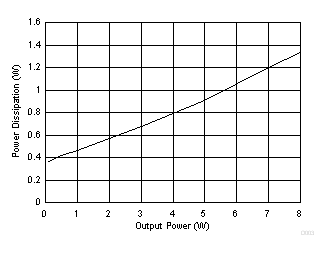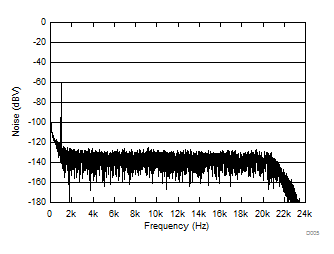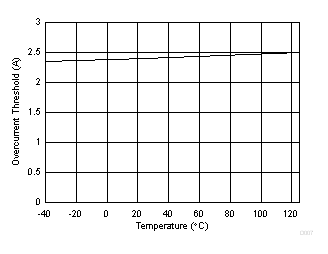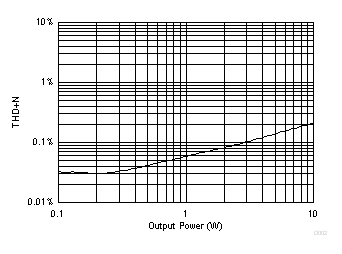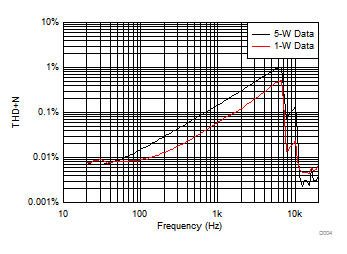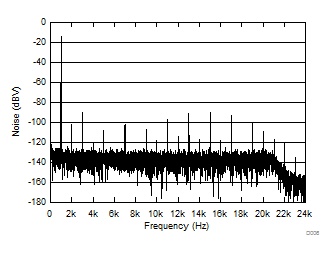SLOSEC9 September 2024 TSD5402-Q1
PRODUCTION DATA
- 1
- 1 Features
- 2 Applications
- 3 Description
- 4 Pin Configuration and Functions
- 5 Specifications
- 6 Detailed Description
- 7 Register Maps
- 8 Application and Implementation
- 9 Device and Documentation Support
- 10Revision History
- 11Mechanical, Packaging, and Orderable Information
Package Options
Mechanical Data (Package|Pins)
- PWP|16
Thermal pad, mechanical data (Package|Pins)
- PWP|16
Orderable Information
5.7 Typical Characteristics
TC = 25°C, PVDD = 14.4 V, RL = 4 Ω, P(O) = 1 W per channel, AES17 filter, 1-kHz input, default I2C settings (unless otherwise noted)
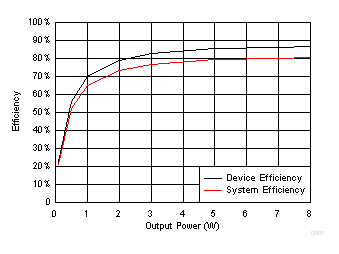
| f(SW) = 400 kHz | TA = 25°C | V(PVDD) = 14.4 V |
